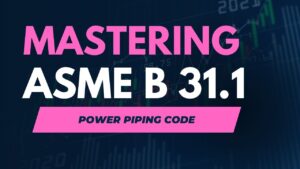Butterfly Valve Seat Types: Unlock 10 Key Concepts
As an expert blog content writer with deep knowledge of piping engineering and SEO, here is the content requested for your technical blog post, based on the provided source material.
UnderstandingButterfly Valve Seat Types is essential for anyone involved in piping systems and engineering. These seemingly small components play a crucial role in how a butterfly valve functions, directly impacting flow control, regulation, and shutoff capabilities. The specific design of the seat determines the valve’s suitability for various applications, from simple on-off services to precise flow modulation or ensuring a leak-tight seal. Choosing the correct Butterfly Valve Seat Types based on operational requirements and service conditions is vital for optimal system performance and efficiency. Let’s delve into the characteristics and applications of the most common Butterfly Valve Seat Types to enhance your technical knowledge.
Table of Contents
👉 Check Course on Piping Engineering
Test Your Knowledge: 10 Essential MCQs
1. What is the primary function of the seat in a butterfly valve?
2. Which of the following materials is commonly used for the soft seat in a butterfly valve?
3. What is a key advantage of a soft-seated butterfly valve with a fully lined body and disc?
4. In which application are soft-seated fully lined butterfly valves commonly used?
5. A soft-seated butterfly valve with a metal disc offers a good balance between durability and sealing performance because:
6. Which of the following statements is true about metal-to-metal seat type butterfly valves?
7. In which type of application are metal-to-metal seated butterfly valves typically utilized?
8. Describe the disc arrangement in a concentric butterfly valve.
9. What is a primary benefit of the single offset disc design compared to the concentric design?
10. Triple offset butterfly valves are often specified for applications requiring:
👉 Browse EPCLAND Courses
Major Takeaways
- The seat in a butterfly valve is crucial for forming a seal and preventing leakage.
- Butterfly Valve Seat Types are primarily soft-seated (fully lined or metal disc) and metal-to-metal.
- Soft-seated fully lined valves excel in corrosion resistance for critical chemical applications.
- Metal-to-metal Butterfly Valve Seat Types are necessary for high temperature and high pressure services where soft materials degrade.
- Disc arrangements, such as concentric and offset designs, impact valve wear, torque, and sealing capability.
- Understanding different Butterfly Valve Seat Types and disc designs is essential for optimal valve selection based on pressure, temperature, fluid type, and required performance.
Conclusion
In conclusion, the selection of Butterfly Valve Seat Types and disc arrangements is fundamental to ensuring the correct performance and longevity of the valve in its intended application. Whether the requirement is for corrosion resistance, tight sealing under moderate conditions, or durability in extreme temperature and pressure environments, understanding the distinctions between soft-seated and metal-to-metal seats, and concentric versus offset disc designs, allows for optimal valve specification. Making an informed choice regarding Butterfly Valve Seat Types prevents premature failure, reduces maintenance needs, and guarantees reliable flow control in diverse industrial processes.
👉 Visit Quiz Blog Collection



